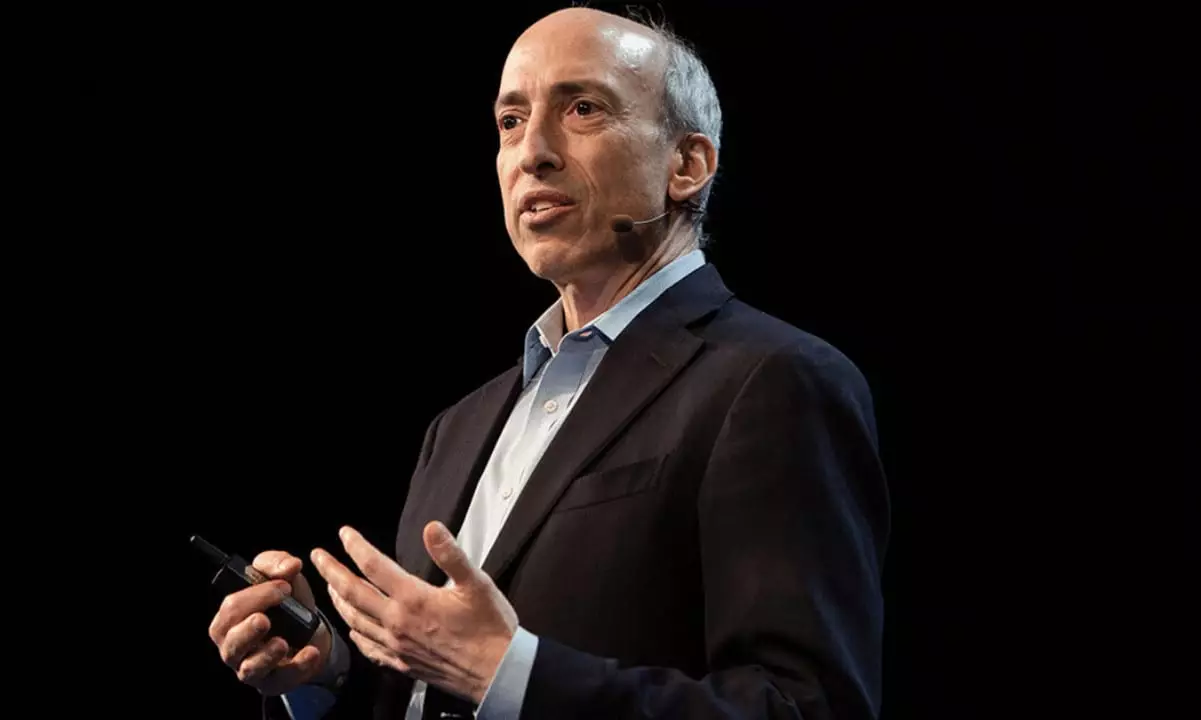In a striking commentary on the cryptocurrency market, Gary Gensler, the former chair of the Securities and Exchange Commission (SEC), has issued a sobering assessment that skews toward the critical. During an appearance on CNBC’s *Squawk Box*, he highlighted the troubling reality that most cryptocurrencies function more as speculative assets rather than grounded investments. The crux of Gensler’s argument is that the current crypto ecosystem largely hinges on market sentiment, with little to no underlying fundamentals supporting the thousands of altcoins flooding the market. In a field already characterized by volatility, this precarious foundation creates alarming risks for investors, making them vulnerable to swift and often devastating market fluctuations.
Gensler’s assertion that the cryptocurrency landscape is “99% sentiment” prompts an essential question: Are investors aware of the precarious nature of their holdings? Many might see the dizzying highs of coin values as an endorsement of their potential, overlooking the broader reality that these peaks are often nothing but mirages driven by hype. The juxtaposition of cryptocurrencies against traditional assets like stocks or bonds is stark. In those markets, investors generally have fundamental metrics to assess true value. Unfortunately, in the world of crypto, that logic fades into obscurity.
Memes and Tokens: A Distasteful Reality
The former SEC chair’s comments also touch on the flood of meme tokens that have emerged in recent years. These assets, while often lighthearted in their nature, paint a troubling picture of investor behavior. With thousands of tokens competing for attention, many fans enter the crypto world not armed with research but driven by popularity and the thrill of “getting in on the next big thing.” Gensler doesn’t mince words when he states that humanity is unlikely to maintain its fascination with the parade of digital assets that lack substantive merit. His belief that an unsustainable market like this cannot persist is not only insightful but reflects the basic principles of sound investing.
If investors remain oblivious to the underpinnings of these tokens, market corrections could yield disastrous results. After all, the allure of quick returns often eclipses the reality encountered when financial reckoning inevitably arrives. Token value simply tethered to sentiment tends to falter when the narrative shifts, and Gensler’s prediction that most altcoins will likely become less relevant as market maturity unfolds certainly seems plausible.
Bitcoin: The Outlier
Despite the grim outlook for the majority of the crypto universe, Gensler does identify Bitcoin as a phenomenon worthy of attention, setting it apart from other digital currencies. Resonating with a global population of over 7 billion, Bitcoin presents itself as a long-term player, likened to gold—our civilization’s perennial store of value. This recognition of Bitcoin’s unique status highlights the distinction between it and myriad altcoins that often lack the same level of public interest and application.
Bitcoin’s sustainability hinges not just on its hype but on the global curiosity and utility it commands. While all cryptocurrencies may suffer from liquidity issues or extreme volatility, Bitcoin appears to stand tall—perhaps as the digital equivalent of gold—and serves as an entry point for many new investors in the crypto arena.
The Geopolitical Landscape
Gensler’s insights extend beyond cryptocurrencies; he also examines the current U.S.-China tariff landscape, emphasizing the critical connection between geopolitical stability and market health. He emphasizes the dangers of inconsistent policy messaging, which not only creates market uncertainty but can also lead to a breakdown in diplomatic relationships. His experience negotiating with Chinese officials serves as a sobering reminder that sound policy must be navigated with care and integrity, lest both markets and international relations devolve into strife.
As the global economy grapples with challenges amplified by geopolitical tension, understanding these intricate relationships is vital to navigating investments wisely. Gensler places considerable emphasis on maintaining respectful and confidential channels of diplomacy, particularly in an era marked by disruptive technologies—of which cryptocurrencies are only one part.
The Future of AI in Finance
Switching gears to an exciting future, Gensler reflects on the intersection of artificial intelligence (AI) and finance. Identifying AI as “the most transformative technology of our times,” he sees vast potential for its application in trading and investment management. His projection that AI will continue to evolve dramatically over the next several years captures the imagination and opens up discussions about responsible implementation in the volatile world of cryptocurrencies.
However, it’s essential to highlight that while AI’s potential is monumental, its current applications don’t yet suffice for high-frequency trading. The underlying technology is still maturing, and its integration into finance must be approached cautiously to prevent exacerbating the complexities that already characterize crypto market volatility.
Ultimately, Gensler’s perspectives compel investors to critically reassess not only their holdings but also the frameworks through which they assess risk and opportunity in an ever-evolving financial landscape.

